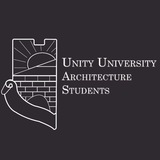Center for Science Development 🧪🌄
Designed by Pikasch Architecture Studio, the Center for Science Development is a beacon of innovation and sustainability.
Spanning three public levels, it features permanent exhibitions linked to a welcoming lobby, temporary displays in the basement, and a first-floor Science Club and restaurant with direct access to an open-air science park seamlessly integrated into the surrounding hills.
Visitors can climb two rock formations to reach exhibition platforms and stunning viewpoints. The structure boasts a stone-mimicking GFRC shell, green roofs, and glass, supported by a robust truss skeleton for spatial grandeur.
Powered by wind turbines for electricity and geothermal heat pumps using water and soil for heating/cooling, it embraces eco-friendly energy. A true fusion of science, nature, and architecture!
@unityarch
Designed by Pikasch Architecture Studio, the Center for Science Development is a beacon of innovation and sustainability.
Spanning three public levels, it features permanent exhibitions linked to a welcoming lobby, temporary displays in the basement, and a first-floor Science Club and restaurant with direct access to an open-air science park seamlessly integrated into the surrounding hills.
Visitors can climb two rock formations to reach exhibition platforms and stunning viewpoints. The structure boasts a stone-mimicking GFRC shell, green roofs, and glass, supported by a robust truss skeleton for spatial grandeur.
Powered by wind turbines for electricity and geothermal heat pumps using water and soil for heating/cooling, it embraces eco-friendly energy. A true fusion of science, nature, and architecture!
@unityarch
❤10
Afar Deboita – Ethiopian Vernacular Architecture 🏕️🌿
In Ethiopia’s Afar region, the nomadic Afar people craft the deboita, a flexible armature tent embodying their pastoralist lifestyle. Made from tree branches or roots and covered with mats, animal skins, or grass, the deboita is easily assembled, dismantled, and transported on camels. Permanent versions use grass, while flexible ones feature mats. This sustainable, climate-responsive design reflects the Afar’s ingenuity, yet Ethiopia’s architecture curricula often overlook such vernacular brilliance. Let’s draw inspiration from these ephemeral, adaptable structures! 🌄
APDA, Nomads.org, Rieger-Jandl (2013)
@unityarch
In Ethiopia’s Afar region, the nomadic Afar people craft the deboita, a flexible armature tent embodying their pastoralist lifestyle. Made from tree branches or roots and covered with mats, animal skins, or grass, the deboita is easily assembled, dismantled, and transported on camels. Permanent versions use grass, while flexible ones feature mats. This sustainable, climate-responsive design reflects the Afar’s ingenuity, yet Ethiopia’s architecture curricula often overlook such vernacular brilliance. Let’s draw inspiration from these ephemeral, adaptable structures! 🌄
APDA, Nomads.org, Rieger-Jandl (2013)
@unityarch
❤2
